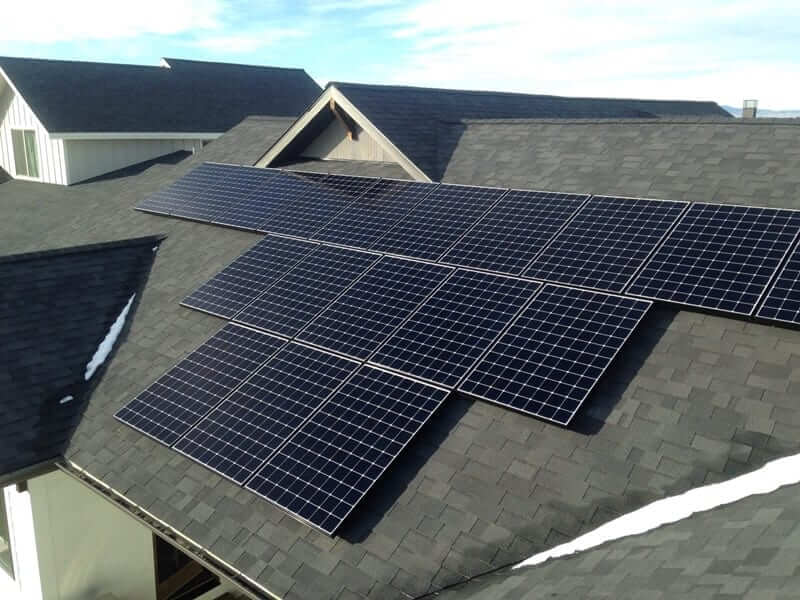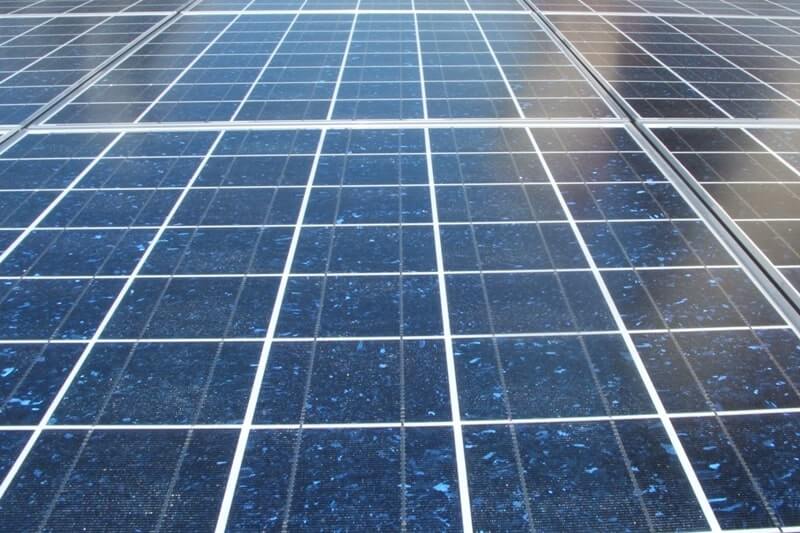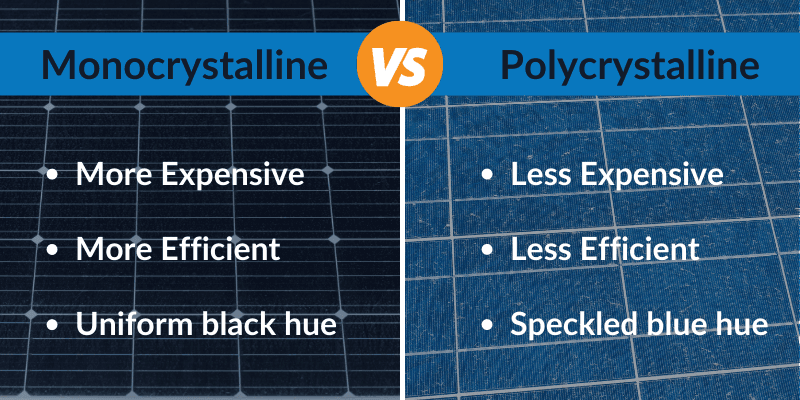Home Solar 101: Monocrystalline vs. Polycrystalline Solar Panels

Silicon is by far the most popular solar panel material used today. Silicon-based panels make up about 90% of all solar sales, and for many good reasons—not least of which is the fact that silicon is the 2nd most abundant element on the planet. These solar panels are durable, long-lasting, and—more importantly—low cost, meaning they can be used to provide clean, renewable energy in nearly any application.
While the choice for silicon panels is straightforward for most homes and businesses, there is an additional decision to be made upfront:
Do you use monocrystalline or polycrystalline silicon panels for your project?
Polycrystalline vs. Monocrystalline
If you’re unfamiliar with the terms, don’t worry—the designations merely refer to how the individual solar cells that make up a solar panel are made. Monocrystalline solar panels consist of solar cells made from a single cylindrical silicon ingot grown in a laboratory. These solar panels are generally considered the higher-efficiency, albeit more expensive, option.
Polycrystalline solar cells, are made from multiple silicon pieces combined in a mold, melted together, cooled, and then cut into individual cells. The efficiency typically isn’t as high as with monocrystalline panels, but the less intensive production process means polycrystalline panels are usually less expensive.
Let’s take a more in-depth look at the relative manufacturing processes to better illustrate where the cost and operational differences arise, as well as when you’d want to use monocrystalline or polycrystalline solar panels for your project.

MONOCRYSTALLINE SOLAR PANELS
The manufacturing process for monocrystalline solar cells begins with a seed of silicon crystal being dipped into a vat of molten silicon. The crystal seed is slowly raised and rotated, pulling up molten silicon with it, solidifying into a single crystal cylinder called an ingot.
The silicon ingots are then cut into bars, which are subsequently sliced to create square silicon wafers. The corners of the silicon wafers are then typically shaved down to create a hexagonal shape before they are assembled into usually 60-cell or 72-cell solar panels.
The benefit of using material made up of a single crystal is that there is more open space within the material for the electrons to move around. More electron movement means better electricity generation, so monocrystalline solar panels enjoy a host of benefits, including:
- Higher production efficiency
- Greater space efficiency
- Better performance in low-light and high-temperature conditions
- Sleeker aesthetics – uniform black or dark blue coloring

POLYCRYSTALLINE SOLAR PANELS
Polycrystalline solar cell manufacturing is more straightforward than monocrystalline solar cells. The process starts by melting multiple silicon fragments together and then letting the molten silicon cool and recrystallize (what gives polycrystalline solar panels their distinct frosted look). This blend of solidified silicon is then cut into the finished product—square silicon wafers, which are later assembled into a complete solar module.
As seen in the picture, the silicon amalgam has a blue hue, and there is more color variation from cell to cell. The blend of multiple crystals means there is less room for electron movement, which means less production efficiency. The lower production potential of the polycrystalline panels means you would need more of these panels than monocrystalline panels to produce an equivalent amount of energy (and ultimately more roof space to accommodate the extra panels).
Nevertheless, polycrystalline sales remain robust, partly because the simplified manufacturing process equates to less expensive solar panels than their monocrystalline counterparts.
CHOOSING BETWEEN MONOCRYSTALLINE AND POLYCRYSTALLINE SOLAR PANELS
So, which is the best choice for you, monocrystalline or polycrystalline solar?

Is there only a small roof available? Perhaps energy production could be maximized using higher-efficiency solar panels like those made by SunPower.
Is there ample roof space but a limited solar panel budget? Or perhaps you have land enough to accommodate a solar ground mount? Cheaper polycrystalline panels could be the perfect solution.
Beyond space and budget constraints, an aesthetic preference for black or blue could sway the decision. The method of solar financing might also make a difference. If the solar power system is being bought outright, the monocrystalline can offer a stronger Return on Investment (ROI). If using a Power Purchase Agreement (PPA), the home or business owner will pay per generated kilowatt/hour. The monthly payment amount will decide the size of savings and which silicon type of panel makes the most sense.
While the decision is an important one, it should be stressed that both monocrystalline and polycrystalline panels are modern, high-performance products, which can create significant electricity savings for those who take their first steps in the solar journey.
Contact us online for a free quote to see if solar makes sense for your project.

